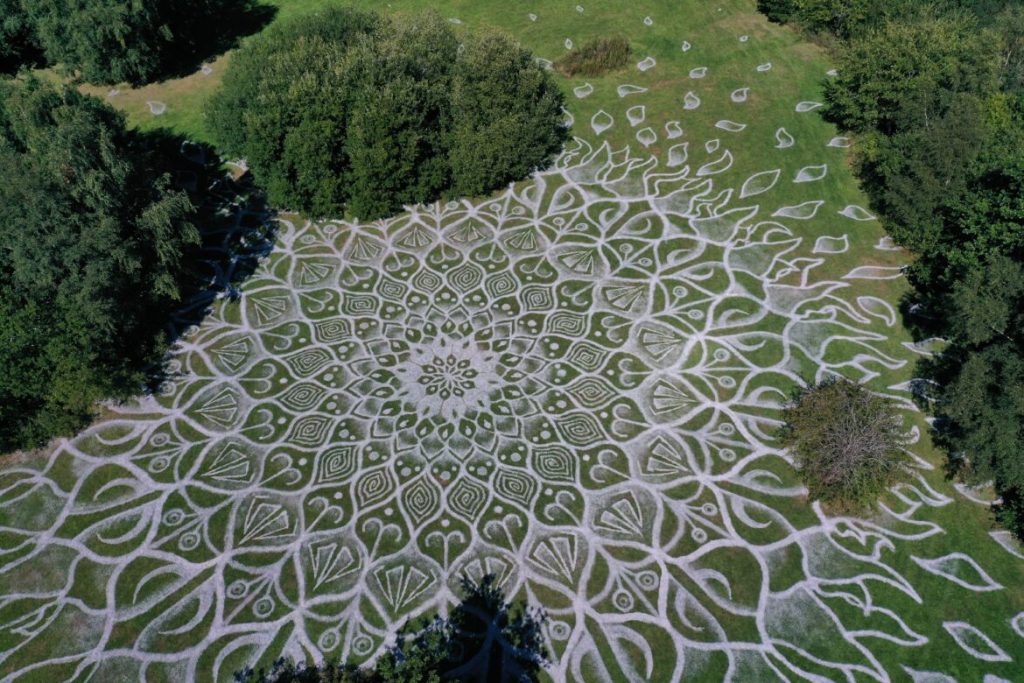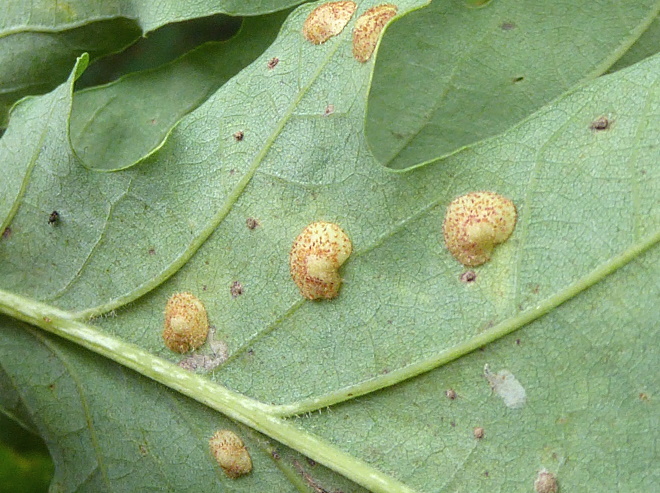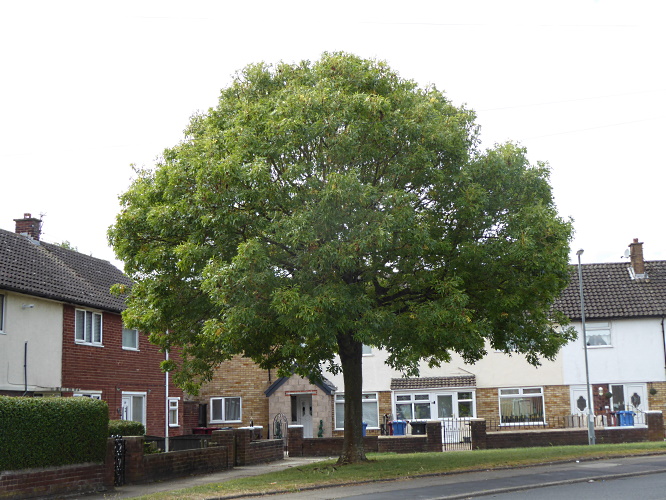This was our first Sunday walk since 24th July, the interruption having been caused by the bus strike, then by one of us having a mild case of COVID, and then another of us having a week away. Our plan today was to see a large-scale land art installation in Halewood Park, created in early August by the artist James Brunt and called The Knowsley Mandala.

The initial description of it said it would only last for about four weeks, and so it proved. It had been made by “painting” the grass with the same stuff that is used for the markings of football pitches, and it soon washes or wears away. There were only a few fragments of the design still visible around the edges.

The rest of the area is mixed woodland, mostly Oak and Birch. The trees weren’t looking autumnal yet, but the hedgerow fruits were all ripening.

It’s been a good year for Acorns and this one, on a long stalk, shows that the tree is a Pedunculate or English Oak Quercus robur. The other common oak, the Sessile, has its acorns growing straight off the twigs.

The undersides of many of the oak leaves were sprinkled with tiny growths called Spangle Galls. Each one contains a single larva of the Spangle Gall Wasp Neuroterus quercusbaccarum. All through the summer the larva feeds and the gall matures, then they all drop off into the leaf litter in autumn. In the spring, asexual wasps emerge and lay eggs on the male catkins of the Oak, causing a different gall, the Currant Gall. In the following spring those larvae emerge as male and female, mate and lay eggs on the leaves which turn into Spangle Galls, and the cycle begins again. The wasps are said to cause little damage to the oak.

There are two large ponds in Halewood Park, but the one called The Ratty had dried right out. The bigger one, known as Ducky Pond, was still fine, and we sat by it for our lunch. There had been a few drops of rain earlier, but the sun came out at noon, so we could enjoy the young Moorhens clambering about in the Water Lilies. A small silver fish jumped and splashed.

There was a small red damselfly flitting about, or was it a dragonfly? When it came to rest on the bank it spread its wings to either side, so it must have been a dragonfly, probably the widespread Common Darter. The brick-red ones are the males.

There were very few birds about. The signboards said they have resident Chaffinches, Great Spotted Woodpeckers, Treecreepers, Bullfinches and Robins, but none were showing themselves, just Magpies and the Moorhens on the pond. We thought we had heard a Buzzard over the Meadow but we didn’t see it. Tree of the Day was this Manna Ash Fraxinus ornus on Abberley Road, with a perfectly even shape. The foliage was clearly Ash-like, but finer and narrower, and the bunches of seeds were more delicate than those of the Common Ash.


Outside the Jenny Wren Nursery on Yew Tree Road these bright and cheerful Sunflowers were peeping over the fence.

Public transport details: Train from Central at 10.14, arriving Hunts Cross 10.30. Returned from Hunts Cross at 14.06 on train towards Liverpool Central.
